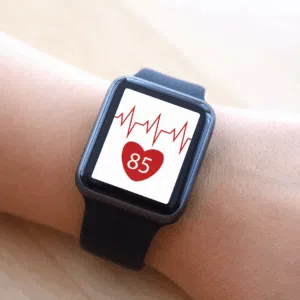

An anaerobic threshold is the point at which metabolism switches from aerobic (using oxygen) to anaerobic (without oxygen) during physical exertion. In other words, it’s when the body can no longer keep up with the energy demands of the muscles.
The anaerobic threshold for people with ME/CFS is typically lower than for healthy people, which means they can’t meet the energy demands of their muscles sooner than a healthy person. A person’s anaerobic threshold can be determined through a cardiopulmonary exercise test (CPET). But for everyday purposes, that threshold can be correlated to heart rate. Many people with ME/CFS will then choose to use a heart rate monitor to know when they are approaching their anaerobic threshold and rest before they exert too much (i.e., pacing to avoid post-exertional malaise).
At OMF’s Ronald G. Tompkins Harvard ME/CFS Collaboration, researchers are investigating the underlying cause of the consequences that people with ME/CFS experience when they cross their anaerobic threshold—post-exertional malaise. Learn more about the study here.
What are the advantages of giving from your Donor Advised Fund (DAF)?
How do I make a donation through my DAF?
Just click on the DAF widget below. It is simple and convenient to find your fund among the over 900 funds in our system.
Still can’t find your fund?
Gifting of Stock
Broker: Schwab
DTC #: 0164
Account #: 47083887
Account Registered as:
Open Medicine Foundation
29302 Laro Drive
Agoura Hills, CA 91301
Please speak to your personal tax advisor and then email or call OMF at 650-242-8669 to notify us of your donation or with any questions.